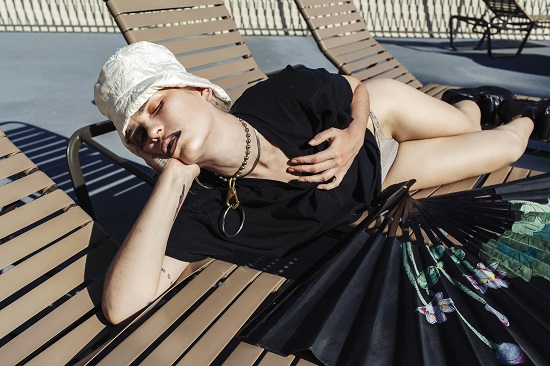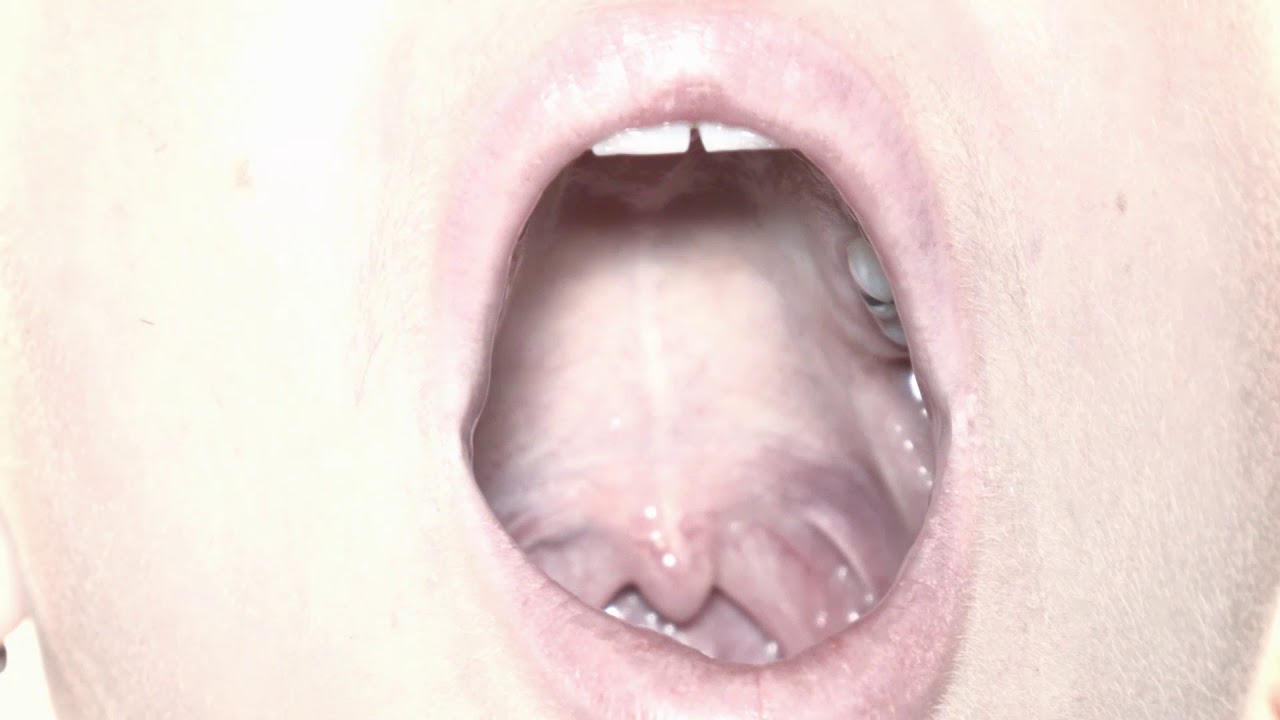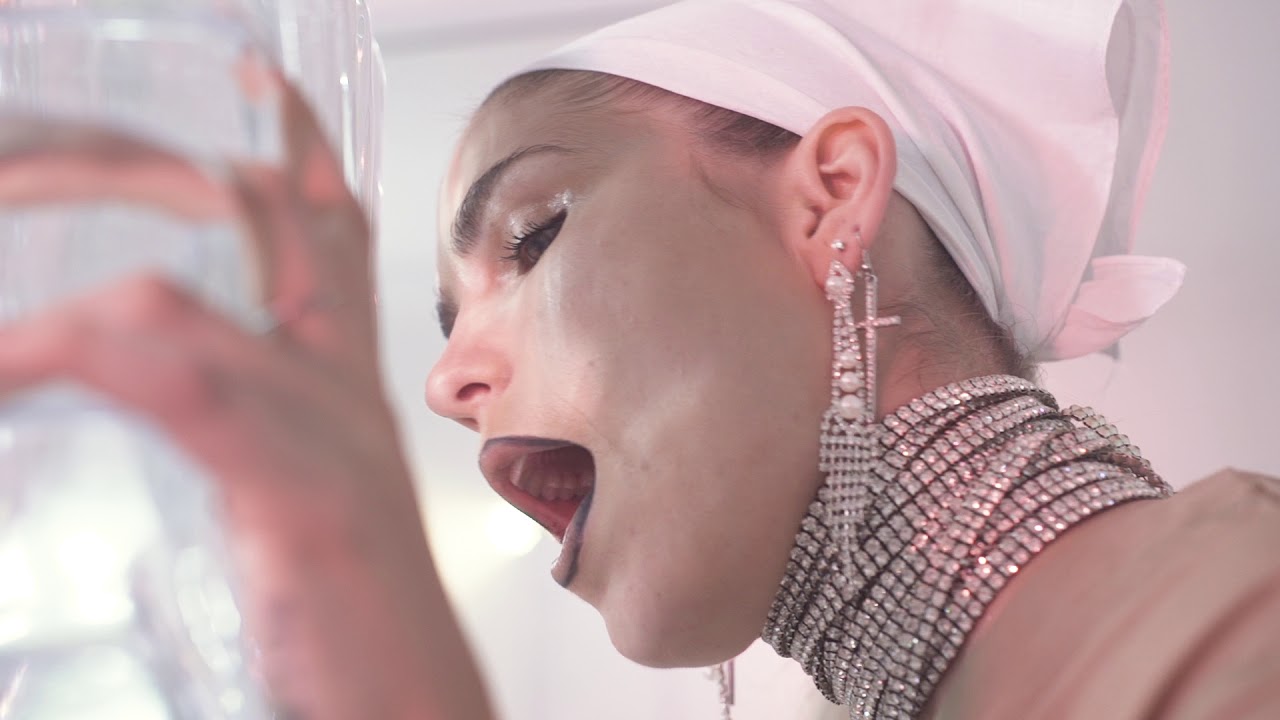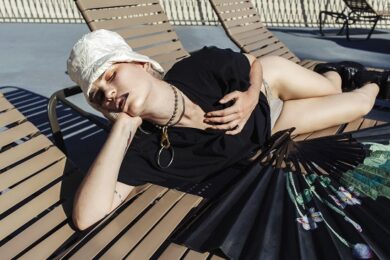Eartheater, photo by Samantha West
This week, the Outlands Network, one of Britain’s most essential platforms for promoting boundary-pushing art and music throughout the whole of the United Kingdom – not just in London – kicks off the latest in its series of tours. The organisation’s commissions have previously seen Beatrice Dillon trade ideas with Keith Harrison, and Kelly Jayne Jones team up with Matana Roberts.
The organisation’s track record for astounding shows means that just about anything they cook up is all but unmissable; combine that with the names they’ve secured for their next tour, and you’d have rocks in your head not to attend. Outlands have landed the magnificent Eartheater, the moniker of Alex Drewchin, for her wild, chaotic and brilliant explorations into the hinterlands of opulent electronica, as well as Brighton-based artist duo Semiconductor, whose films delve into the staggering possibilities of science as a visual tool to staggering effect. The two will be collaborating on a specially commissioned piece, ‘Fracture Patterns’, which embarks on its tour of the UK on Thursday (full dates at the end of the article).
The show sees Eartheater performing a brand new piece of music, backed by extraordinary visuals. While Semiconductor are known for their explorations of the scientific – from a cosmic to a microscopic level – her music is concerned with the visceral, the emotional and the human. As a result, each stretches the other into unexplored territory, their practises intersecting to brilliant effect. To find out more, tQ called up Drewchin to talk emotional science and scientific emotion.
For our Q+A with Eartheater read on. Tour dates for ‘Fracture Patterns’ begin tomorrow (June 13) and are at the end of the article. You can click herefor tickets and more information
Hi Alex, what first drew you to Outlands, and how did you become involved?
Alex Drewchin, Eartheater: I was first approached two years ago. I was told they were looking to do some sort of immersive show that I’d be a part of. I remember there were some sketches, it looked like a maze, and there were different hypothetical zones where I would be performing, maybe along with other musicians. At first it was very vague, and I didn’t really understand it, but when I looked at Semiconductor’s work I was like ‘Ok yeah, this is legit’. I immediately agreed to it, then two years later I was like ‘oh shit, this is fucking happening and I’m so fucking busy! How am I gonna come up with an hour’s worth of new music that holds up to the integrity of these films?’ But you know, I did it! And here we are. I’m actually really proud of it, it forced me to make sounds that I wouldn’t really do on my own. It’s the most choreographed, carefully lit, blocked out performance that I’ve ever done. Mostly what I do is pretty loose. The music would be planned but performing to it, I have my own language in choreography but I’m improvising with that language usually.
How closely are you choreographing your performance to Semiconductor’s film?
AD: The audio is really, really tightly synced up to the video. It’s almost sound-designed. And then there are some ‘song’ moments, and there are times where I shrink back and using light and wind and various elements, I become part of the mood as opposed to the focal point of attention.
At what point did you and Semiconductor first start speaking about the project, and how were those initial conversations?
AD: We had our first in-person meeting in October. I had a little residency there in Bexhill and stayed in Brighton during the two-month long tour I did after Irisiri. As much as I find affinity in points of this show, the overall arc of it is dictated by their films, which is a good exercise for me as an artist because I think that in spite of my sprawling taste and unpredictability in style, I’m kind of allergic to things that aren’t completely me.
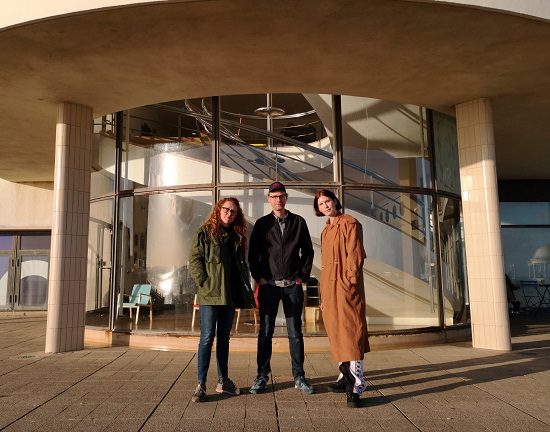
Eartheater and Semiconductor, photo by Caleb Madden
Your music as Eartheater often makes use of chaos and unpredictability, was it hard to fit that into the structure of Semiconductor’s films?
AD: I don’t think it was hard, I think it was kind of cool. I think I actually brought a lot of structure to it as a performer. The music is the thing that ties it all together, but I would say that my chaos, if we’re gonna use that word, was an important element because I was able to match what’s needed for so many different conflicting elements in the films. For instance, there’s a film of the sun and solar flares and it’s like simultaneously a horrific and scary hellscape whilst also being so flowy and luscious and just undeniably beautiful, while also being a burning hot ball of gas. I had to juxtapose fear sounds, noise and terrible scary moments with really luscious and beautiful arpeggiations. For me I don’t think that the film would be captured sonically without all of the elements that I’m playing with.
Can you tell us more about Semiconductor’s visuals?
AD: In some ways this is kind of like a Semiconductor video retrospective. They’ve created these big beautiful screens, and two of the videos are relatively new, one is a reworking of ‘Peripheral’ actually, from Irisiri, and the second one is a video they edited of these teeny tiny phosphorescent crystals.
How did you approach the writing for your music?
AD: Not a lot of sleep, tonnes of coffee and discipline! I got the feeling from the films and I wanted things to sound really tight and detailed. I think a lot of the time the sonic accompaniment to ambient and science-based films, or art films in general, often seems ambiently lazy. That was something I didn’t want to succumb to. These are really detailed pieces with arcs and points of narrative abstracted. They’re really embroidered.
Can you expand on the themes and theory behind your collaboration, and the name ‘Fracture Patterns’?
AD: For me initially the project was called Fields Of Noise, and as a musician I didn’t want to use the term ‘noise’ because it’s just so loaded and so easily written off at this point. It’s such an eye-roll.
It pops up as a lot in music journalism as a lazy catch-all term…
AD: But for Semiconductor as visual artists they would say no, that’s the perfect word to describe disinformation. Whether you’re going really, really big in the cosmos or super teeny tiny in a microscope, there’s those fields of mystery. I was just like ‘Look, as a musician I can’t call it fields of noise’. I don’t even remember when ‘Fracture Patterns’ happened, but to me really my job in this project was to bring the human element to the sphere of Semiconductor’s work. They’re reaching out and beyond what is at arm’s length, so I’m sort of providing a third point to that spectrum.
In your promotional material for the tour, you mention “the spectrum between empirical research and human emotion” – do you see yourself at one end and Semiconductor at the other or is that too simplistic?
AD: No, I think that’s OK to see it symbolically that simply. Obviously, it’s not that simple, but I like this project having a simple clear feeling in that sense.
How much has science and technology been an influence on your work in the past?
AD: My relationship with it has always had to do with the fact that I was always told I have a learning disability. I was a high school dropout. My education was very chaotic and disjointed for multiple reasons. But I always had this deep sense of curiosity, of wanting to know things and wanting to absorb things, not necessarily understand them. I have negative memories of the pressure of having to fully understand things as opposed to letting the curiosity absorb stuff and then waiting for the penny to drop when it drops. I think that one of the alienating things in the art world is this pressure for people to have an opinion about it immediately. That’s something I think alienates people who haven’t been privileged with an education that would teach them how to talk about art and information in general. That spans a lot of different worlds.
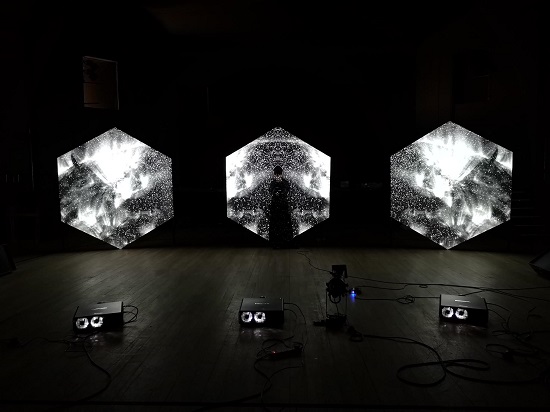
An image of ‘Fracture Patterns’ in progress, photo by Caleb Madden
There’s a wondrous element to a lot of science, there’s a lot of value to the emotional response to it, as well as the technical.
AD: I try to remind myself to stay in the wonderment of it all. Of course, it’s not all super cold and dry and boring, it’s beautiful, but I remember seeing some videos of some physicists talking about neutrinos. This was years ago, I was in my early 20s, and the physicists couldn’t really understand them, their eyes would glaze over and they’d start mumbling nonsense in the interviews. I loved seeing where all the data started turning into mystery, into noise, and that glassy eyed wonderment and curiosity. That was the inspiration.
I love the relationship between art and science, too. I have an email relationship with a professor at Johns Hopkins University that’s been a fan of Eartheater since Metalepsis, my first album. He’s always emailing me cool things like ‘maybe this will inspire you’, and they often do! He’s working on this language bot and they were using Eartheater lyrics to test it…
A big part of Outlands’ philosophy is playing places that wouldn’t usually be included, do you find there’s a problem with regional areas being included with experimental art?
AD: For sure, as far as the cross-hatching of communities, definitely, but at the same time I’m always amazed by what strange shit comes out of the middle of nowhere. I grew up on a farm in the middle of nowhere, ten miles from anything, and I’m me! But yeah, I think it’s really important, I like that about this project, I don’t think we have that in the States.
Finally, what’s next after the Outlands tour?
AD: I’m working on a mixtape which I’m going to release on my own label. I’m starting it to start putting things out quickly; the time it takes to put out a record quickly through any other label is hard for me to do. I want to release more things off cuff. I’m working with friends and producers. It started as a ten-block radius, but it’s expanded to all my Queens and Brooklyn people. I’m excited to be doing that while I take my time with the next record for Pan, too. I’m also getting ready to release another record that’s in its own planet in my solar system. It’s giant but I can’t really talk about it yet. Not to mention travelling, touring, remixes and scoring.
.
Outlands Tour Dates
JUNE
13 June – De La Warr Pavilion, Bexhill
14 June – MK Gallery, Milton Keynes
15 June – Arnolfini, Bristol
16 June – KARST, Plymouth
17 June – Cre8 Studio Hackney, London
18 June – Cambridge Junction, Cambridge
20 June – Niamos, Manchester
21 June – Fuse Art Space, Bradford
22 June – Supersonic Festival, Birmingham
For tickets, click click here

